This month, the Cultural Property Advisory Committee at the State Department is considering imposing import restrictions on art and ethnographic materials from Afghanistan – a blockade that could require their return to the Taliban. Other articles in this Afghanistan Special Issue show how a blockade will not meet the requirements of U.S. law or to protect objects in the National Museum and at sites in Afghanistan. An additional reason why establishing a “Designated List” of blocked objects under the Cultural Property Implementation Act is not reasonable is that historical objects of Afghan origin are often indistinguishable from those in neighboring countries. The brief photo essay below shows why.
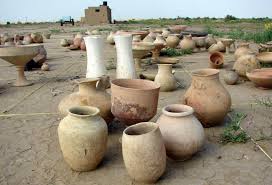
Central Asian Bronze Age vessels and stone plinths, Turkmenistan, photo Victor Sarianidi.
From its earliest history up to the present day, Afghanistan’s civilizations and cultures have not been bound within its modern borders. Afghanistan has been both a pathway for trade and the crossroads of expanding empires for 4000 years. Yet any agreement to block art from Afghanistan under the 1983 U.S Cultural Property Implementation Act requires that the art and artifacts were originally found within Afghanistan’s present day boundaries.
Few types of objects are found exclusively in Afghanistan. Every important historical and cultural development since the Bronze Age has left behind very similar, even identical artifacts, archaeological sites and monuments in a neighboring country or countries. Depending upon the period in question, ancient and ethnographic objects from Afghanistan cannot be distinguished from those found in Iran, Turkmenistan, Uzbekistan, Tajikistan, Kyrgyzstan, Pakistan and even China. Of all these countries, only China has an existing agreement with the U.S. under the Cultural Property Implementation Act.
In order to provide examples of the impossibility of drafting an accurate list of objects of “Afghanistan type,” we provide an abbreviated list of some of the important cultures that existed within Afghanistan and their extension beyond today’s political boundaries, together with examples of cross-border materials.
Neolithic Period
Until the 1970s, Afghan pre-history was known primarily though Roman Ghirshman’s work in Sistan just before WW2, and Walter Fairservis’ work in Sistan and near Kandahar in Afghanistan and in related sites in eastern Iran. Louis Dupree worked near Kandahar and at a Bronze Age site at Mundigak in southern Afghanistan which he excavated between 1951-1958.[1]
Bronze Age
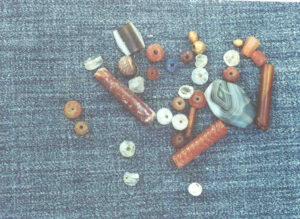
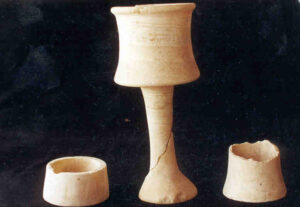

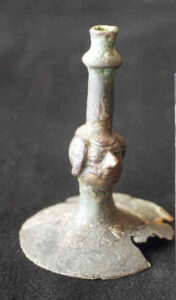
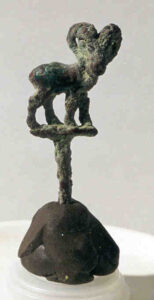
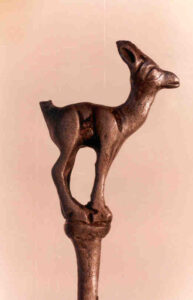
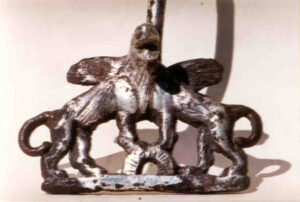
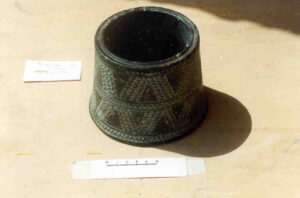
All the above photographs are by archaeologist Victor Sarianidi of objects excavated from the from the site of Gonur Tepe in Turkmenistan and are indistinguishable from objects originating in Afghanistan’s Bronze Age sites.
The major Afghanistan Bronze Age sites, paralleling the sites in Turkmenistan, Uzbekistan and Iran (together known as the Bactrian-Margianan Archeological Complex, BMAC) are primarily known through Sarianidi’s research. Sarianidi excavated at Dashli and other Bronze Age sites northeast of Balkh in the 1970s. The Afghanistan sites appear to have been major suppliers of luxury materials, agate, lapis and turquoise to Mesopotamian city-states. Along with rich finds of indigenous bronze, silver, and gold-work, grave goods from Afghan sites have included Mesopotamian and Dilmun cylindrical and stamp seals and other evidence of cross-cultural contacts.
The Soviet invasion in 1979 interrupted Sarianidi’s investigations in Afghanistan. He moved his excavations to Turkmenistan, where similar Bronze Age sites abound. Sarianidi’s major analysis of Bronze Age seals and amulets found both in Afghanistan and Turkmenistan is entitled Myths of Ancient Bactria and Margiana on Its Seals and Amulets, Pentagraphic, Ltd., Moscow, 1998. Another publication by Sarianidi, Margiana and Protozoroastrism, Kapon Editions, Athens 1998, contains numerous maps and illustrations of identical materials from related cross-border sites in Iran, Turkmenistan, Uzbekistan, Tajikistan, Afghanistan and Pakistan.
Gonur Depe is the largest of several dozen Turkmenistan settlements in this period. Three related cemeteries have recently been located in in Tajikistan. Numerous BMAC materials indicating substantial trade activity have been found in Indus Valley civilization sites in Pakistan. Conversely, a Harappan settlement was found in northern Afghanistan at Shortugai, probably a trading station.
Achaemenid period
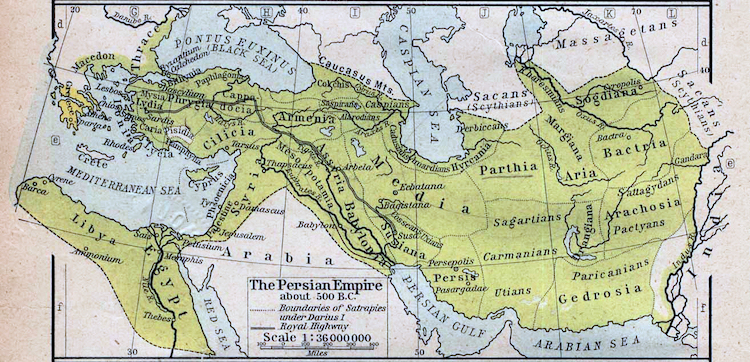
Historic map of the Achaemenid Empire including present day Afghanistan, William Robert Shepherd, 1923, public domain.
The Achaemenid Empire was centered in Iran and Iraq but extended into Central Asia. Achaemenid seals, beads, and silver and gold objects have been found in Afghanistan. Cyropolis is a Tajikistan Achaemenid site. The remains of an Achaemenid city site have been found ay Altyn, near the much earlier Bronze Age site of Dashli. which appears to have been burned around 329 BCE, when Alexander the Great is said to have captured the local ruler, Bessus.
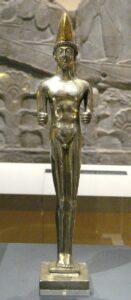
Statuette of a naked youth from the Oxus Treasure. Photo by PHGCOM, 2009, Trustees of the British Museum.
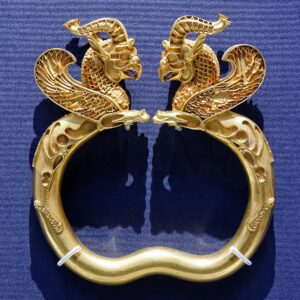
Gold armlet with griffin heads, from the Oxus Treasure, between circa 499 and circa 300 BC, acquired 1897: bequeathed by Sir Augustus Wollaston Franks, Trustees of the British Museum.
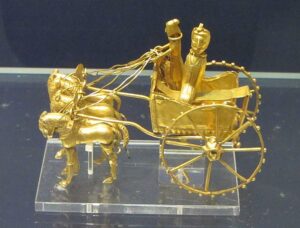
Oxus chariot model, 5th-4th century BC. Photo by BabelStone, 25 March 2012, CC-SA 3.0 Unported license. Trustees of the British Museum.
One of the most famous finds of the Achaemenid period is the 5th-4th BCE Oxus Treasure now in the British Museum. Although its findspot is not certain, it is believed to have been discovered circa 1877 at Takht-i-Kuwad, a few miles north of the Amu Darya in what is now Tajikistan and brought for sale to British authorities in what is now Pakistan.

Apadama relief, Photo by درفش کاویانی, 30 August 2007, CCA-SA 3.0 Unported license.
Another rich Achaemenid find, labeled as “a second Oxus treasure” by Japan’s Miho Museum, which acquired the looted objects from Afghanistan in the 1990s, was actually found in an old water source at Mir Zakah (together with 550,000 coins, see Peter Tompa, Coins of Afghanistan – Documenting History and Trade, CPN September 5, 2021). Mir Zakah is about 500 km south east of the Amu Darya.
Objects in the Oxus Treasure are comparable to the “Apadama” reliefs at Persepolis which show envoys presenting armlets, bowls, and amphorae with griffin handles as tribute.
Fragments of Achaemenid period cuneiform tablets were found in archaeological excavations at Old Kandahar in southern Afghanistan and published by Michael T. Fisher in ‘Achaemenid Elamite Administrative Tablets, 3, Fragments from Old Kandahar, Afghanistan’, Arta 2015.001.
Alexandrian and Hellenistic periods
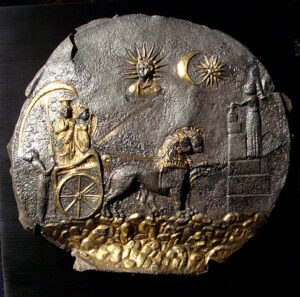
Plate, silver and gold, found at Ai Khanoum, showing Cybele pulled by lions, a votive sacrifice and the Sun God. Ai-Khanoum, Afghanistan, 2nd century BC.

Statue of a Woman and Carved Ivory Decoration, Takhti Sangin, 2nd-3rd c BC, Dushanbe, National Museum, photos by Jeffrey C Rozwadowski, 6 February 2016, CCA-SA 2.- Generic license.
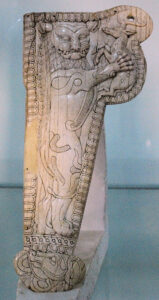
French archeologists from the Delegation Archeologique Francaise de Afghanistan (DAFA) have been working in Afghanistan since the 1920s and have located numerous Hellenistic sites there. One of the most renowned was discovered by the French archeologists Bernard and Schlumberger in 1963 at Ai Khanoum. Although fewer, there are clearly related Hellenistic sites in present day Tajikistan, notably the Buddhist monastery at Ajinateppe. Similar Hellenistic materials have been found in present day Uzbekistan (though many were removed to Russian museums), and Termez/Surkhandaria is home to Greco-Bactrian sites, including Balalik Tepe.
The Hellenistic site of Bagram 50 miles north of Kabul was excavated twice by Hackin and Ghirshman, but enormous areas remained unexcavated. The Soviets built a large military airfield at the site, and it became the scene of continuous, heavy fighting for decades, after which it became an American airfield. Bagram contained incredibly rich materials reflecting the region’s close ties to the Silk Road, and was the source of the Phoenician glassware, Greco-Egyptian bronzes and Han dynasty materials at the Kabul Museum, as well as extraordinary sculptures that were destroyed by the Taliban.
Takht-i-Sangin is the name given to a Greco-Bactrian site north of Afghanistan in Tajikistan at the confluence of the Panj and Vakhsh rivers, which join to form the Amu Darya. Guvnor Lindstrom’s article “Southern Tajikistan” in Rachel Mairs (ed.). The Graeco-Bactrian and Indo-Greek World, suggests the fortress of Takht-i-Sangin may have been a center of religious worship for the Bactrian region.
Steppe cultures
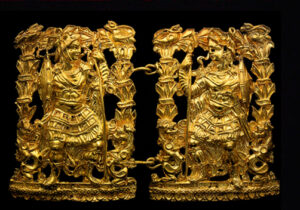
Men wearing Greek armor, Tilla Tepe hoard. photo by World Imaging. GNU Free Documentation license.
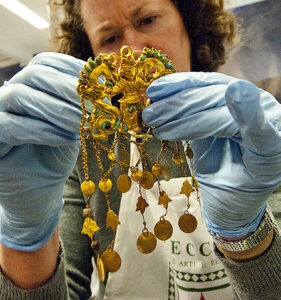
Examining a gold and turquiose ornament from the Tilla Tepe hoard. 23 April 2012, NTNU Vitenskapsmuseet. CCA 2.0 Generic license.
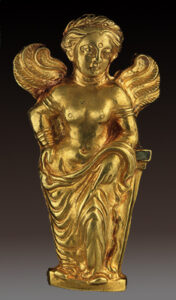
Applique, gold and turquiose, Tilla Tepe Tomb IV. National Museum of Afghanistan. By Ismoon, 12 December 2012.
In early 1979, several months before the Soviet invasion, the Russian archeologist Victor Sarianidi was excavating a Bronze Age temple site when he discovered eight graves containing over 20,000 pieces of worked gold dating between the 1st c. BCE and 1st c. AD, known as the Tilla Tepe (usually written Tillia Tepe) treasure. No one had suspected that such a rich nomadic-based steppe culture existed anywhere near Afghanistan at this period. The objects included a wide range of styles, often combined in the same object; a Nike figure as voluptuous as an Indian tree-spirit and with a caste mark on her forehead, a Scythian or Sarmatian style belt buckle of gold with teardrop shaped turquoise inlay, but depicting a man in Chinese style hat pulling a handcart. Clearly there may be entire periods of art from Afghanistan (and stylistic formulations) yet to be discovered.
Gandharan and Kushan empires
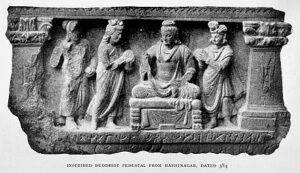
Pedestal of a Buddhist statue, year 384 inscription, from Palatu Dheri. Charsadda Buddhist stuatuary, Source: Archaeological Society of India Annual Report 1902-1903.

Statue, probably of King Kanishka, found at Surkh Kotal, photographed in the Kabul Museum, credit Afghanistan in the Early 1960s. Later smashed to rubble by the Taliban. Reconstructed
The many Gandharan type-sites in Pakistan include Charsada, excavated by Sir John Marshall in 1902 and by Sir Mortimer Wheeler in 1958 and Taxila excavated by Sir Alexander Cunningham and later by Sir. John Marshall. There are many others too numerous and well-known to need enumeration. It is often impossible even for experts to distinguish between Afghanistan and Pakistan materials of Gandharan type. Much Gandharan and Kushan material is rather standardized in form. Vast numbers of illegally excavated Gandharan statuary from Pakistan entered the art market between1960 and today, thanks in part to the involvement of Pakistan officials and military in the illegal trade.
Important evidence of Kushan rule in Central Asia was found by Schlumberger at the site of Surkh Kotal. Schlumberger excavated the hilltop temple complex between 1952 and 1963. The architecture and ornamentation is executed in indigenous Bactrian style, a precursor to the Gandhara artistic style; numerous inscriptions in Greek and Bactrian languages included references to the great king Kanishka. The formidable statue of a ruler in a Central Asian robe, trousers and heavy boots (probably of Kanishka) discovered at Surkh Kotal was smashed by the Taliban at the Kabul museum in 2001; the rubble has since been reconstructed.
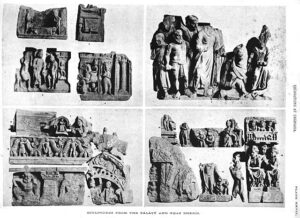
Charsadda Buddhist stuatuary, Source: Archaeological Society of India Annual Report 1902-1903.
The later Kushan, Sasanian and Sogdian related periods’ sites include Bamiyan, Hadda, Fondukistan, Balkh, Shamshir Ghar, Khair Khaneh and sites around Kabul. Archeological investigations began in 1922 at Bamiyan, and continued sporadically, virtually until the destruction of the great Buddhas by the Taliban in 2001. The Bamiyan region is the source for many early Buddhist manuscripts now in Norwegian hands.
Excavations at Fondukistan revealed yet another extraordinarily graceful blending of Sogdian, Hellenistic and Indian influences in painted clay sculpture. Almost all examples of this material were retained in the Kabul Museum, and appear to have been destroyed by the Taliban.
Khair Khaneh was a Brahmin temple exemplifying a period of regional Hindu hegemony located only seven miles from Kabul. Its marble statuary mingles Kushano-Sasanian and early Hindu motifs, making it an obvious target for the Taliban.
Islamic period
The simple burial prescribed by the Islamic faith means that Islamic graveyards are of no interest to plunderers. Damage has been inflicted on various monuments, more often through weathering, neglect and war than through deliberate pillage, except in the Ghazni region south of Kabul. Ghaznavid marble tiles and wall sections could be purchased from Kabul dealers in the 1970s, although even at that time, most of them were recent fakes. Afghanistan continues to be rich in dilapidated but still-standing structures dating from the 10th to 17th century, many never investigated.
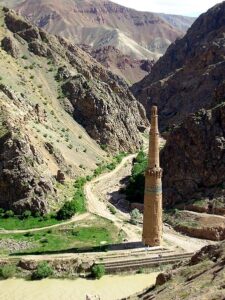
Minaret of Jam, Harirud, Afghanistan, Photo by David Adamec, 2006, public domain.
As Andre Maricq and Gaston Weit’s 1959 publication of the Delegation Archeologique Francaise, Le Minaret de Djam, begins, “Depuis de longues annes, la rumeur etait parvenue a Caboul de l’existence, dans la valle du Heri-Roud, d’une tour ancienne d’une grande elevation et d’une grande beaute.”
Other important Islamic monuments that were extensively studied by scholars include excavations by Jean-Claude Gardin at Lashkari Bazar in Bost in 1963, Terry Allen’s 1981 publication cataloging Timurid period Herat, and Ralph Pinder-Wilson’s studies of Islamic epigraphy at the minaret of Jam. Bronze and ceramic Islamic period artifacts identical to those of Afghanistan are found in Iran, Uzbekistan, Tajikistan and Turkmenistan; it is sometimes a struggle to get material known to have come from Afghanistan to be properly labeled in Western museums, although at time Afghanistan material may be recognized by its more rigorous style.
This then, is what might be called the “Designated List” problem. Almost every object that could be named on a Designated List of objects blocked from U.S. entry from Afghanistan may not be from Afghanistan at all.

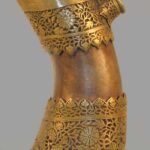
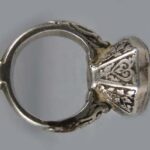
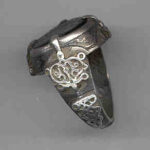
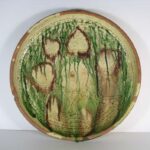
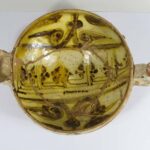

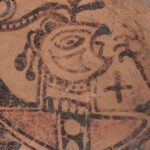
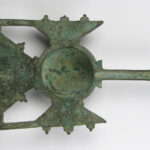

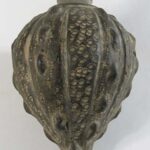
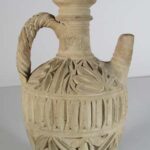
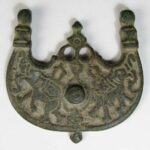
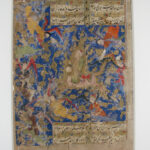

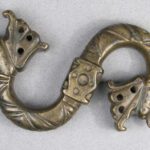
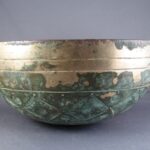
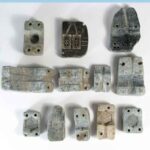
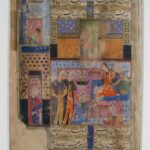

This is Part 4 of a 4 part series.
Part One Afghanistan’s Heritage: A Former Government, the Taliban, and a Questionable Blockade
Part Three The Evolution of Afghanistan’s Cultural Heritage Law: How Communists Turned a Workable Law Against Archaeologists and Sentenced a British
Museum Curator to Death
Part Four Afghanistan’s 4000 Years of Cross-Border Empires and Trade
[1] Louis Dupree worked extensively throughout Afghanistan, focusing largely on the Neolithic, from the 1950s through the 1970s, when he and his archeologist wife Nancy Hatch Dupree were forced out of the country after the first communist coup d’etat. Their home had served as one of Afghanistan’s intellectual salons and they were too well acquainted with many of the personalities associated with the Communist takeover.
 Oxus chariot model, 5th-4th century BCE, 1897: bequeathed by Sir Augustus Wollaston Franks, Trustees of the British Museum, © Marie-Lan Nguyen, Wikimedia Commons
Oxus chariot model, 5th-4th century BCE, 1897: bequeathed by Sir Augustus Wollaston Franks, Trustees of the British Museum, © Marie-Lan Nguyen, Wikimedia Commons 

